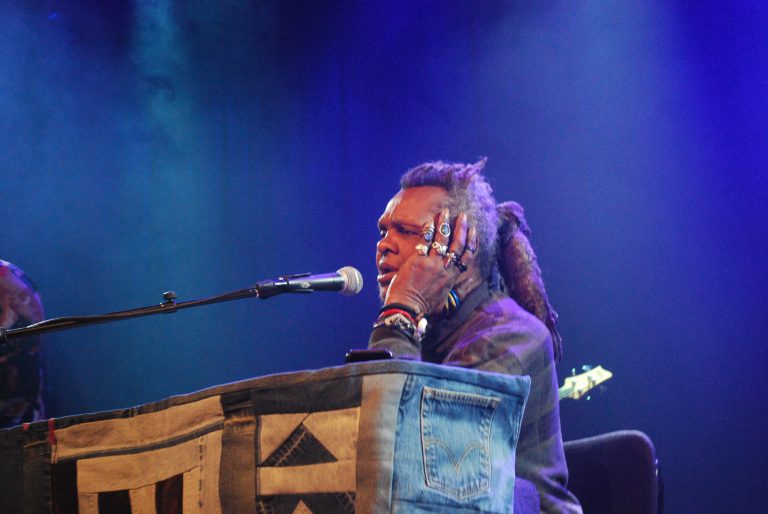Big Ears still feels like a secret, a hidden treasure nestled in The Marble City. Gathering together artists and musicians of all genres and aesthetics, the festival allows them to explore their individual sounds in an atmosphere of relaxed experimentation. There’s no rush to the 4-day event, a mixture of divergent electronic detours, folk authenticity…really, an acceptance of all music. Nothing is off limits, and everything is welcome. And that’s what makes it such a remarkable gathering and an experience unlike any other. At least, that’s how I felt as the days went on, as I took in the sights and sounds of my second visit.
After canceling the festival in 2021, Big Ears came roaring back last year with artists like Patti Smith, Sparks, Moses Sumney, Yves Tumor, Bill Callahan, and Low finding themselves performing across a dozen different venues. The lineups have always been eclectic and no single genre takes the spotlight. This is a festival that prizes its uniqueness, its ability to assemble sounds of all affections into a single city of a long weekend of joy and magic and other forms of emotional release. As with any festival, however, there are some tears as well — specifically, this comes when having to prioritize certain shows over others. It almost feels as though you’re making presumptive judgments. Do I see The Mountain Goats or Liturgy? Do I hike down the road a bit to see Calexico or stay close and watch Arooj Aftab with Vijay Iyer and Shahzad Ismaily (which also means I’ll miss Joe Rainey and Kali Malone)? Thankfully, some musicians perform multiple sets which negates some of this internal handwringing.
My experience this year at Big Ears likely mirrors mothers in attendance. But it might not; that’s the beauty of this festival — everyone can have wildly different experiences and come away changed for the better. I made my schedule in advance. I knew who I was going to see. And then I got to Knoxville, and everything changed. My schedule wasn’t completely disregarded, but sometimes you just have to feel your way through something of this magnitude. Sometimes you make a last second choice to see someone you’ve never heard of, or never seen live before, and it feels like the only choice you could have made. That’s the beauty of Big Ears. That’s the uniqueness inherent to this fest. And I hope that it never changes, that nothing is lost in the coming years, and that this weird and wonderful collective of people, places, and musicians continues to subvert expectations for decades to come.
Day 1
I had decided early on to start this year with Lonnie Holley, whose latest record Oh Me Oh My has been a balm in uncertain months. A musician and found materials artist, he approached music like his art, building from existing elements, taking folk, blues, rock tropes and bending them to create these indelible visions. It was a joyous affair, filed with hard-won wisdom and alternate perspectives on race, social structures, and the odd bit of divinity. He was backed by genre-bending collective Mourning [A] Blkstar. More shaman than frontman, although he’d likely prefer to be called a preacher, Holley ‘s performance was a treatise on enlightenment through sound. He sang of hardship, revelation, and love — and he did so with a joy in his heart. That was evident from the moment he took the stage. Moor Mother joined him toward the end of his set, performing “I am a Part of the Wonder” and sticking around to bask in that radiance, singing and offering spoken word tangents when appropriate. What a lovely way to start Big Ears. And I’ve still got around 24 more shows to attend, but we’ll get to those in due time.
From the Mill & Mine, where I watched Holley perform, I began the march southwest toward St. John’s Episcopal Cathedral, an ornate and gorgeous cathedral featuring one of the largest pipe organs I’ve ever seen. John Zorn performed a longform improvised piece on it for last year’s festival. Here I sat and watched Mivos Quartet perform three pieces written by Steve Reich. Using two violins, a cello, and viola, the group performed a triptych consisting of Reich’s Different Trains, Triple Quartet, and WTC 9/11 — and their [performance rippled with terror, uncertainty, a love of sound, and overt nods to Bartok. It was vastly different from Holley but, oddly, it still felt like some distant cousin, a more aberrant method of working through emotional baggage and attempting to make sense of the senseless and the world around us, which is often the same thing. The music echoed throughout this sacred place, turning music into holy writ with the capacity to change the world.

I knew I wanted to catch 700 Bliss so after Mivos Quartet I headed to Jackson Station where Moor Mother and DJ Haram were set to take the stage. Their 2022 debut, Nothing to Declare, was a vicious and welcome assault on patriarchal power and sexual mores, exploring these molten them=es through a series of dancefloor and hip-hop mutations. It was aggressive and confrontational and a startling look at intersectional restlessness. The beats clattered and disintegrated. Words were offered and revoked and reclaimed. The music would drop to a whisper and then grow to thunderous eruptions. The set was anarchic and welcomed everyone into its fold, which actually made it a perfect analog for the festival as a whole.
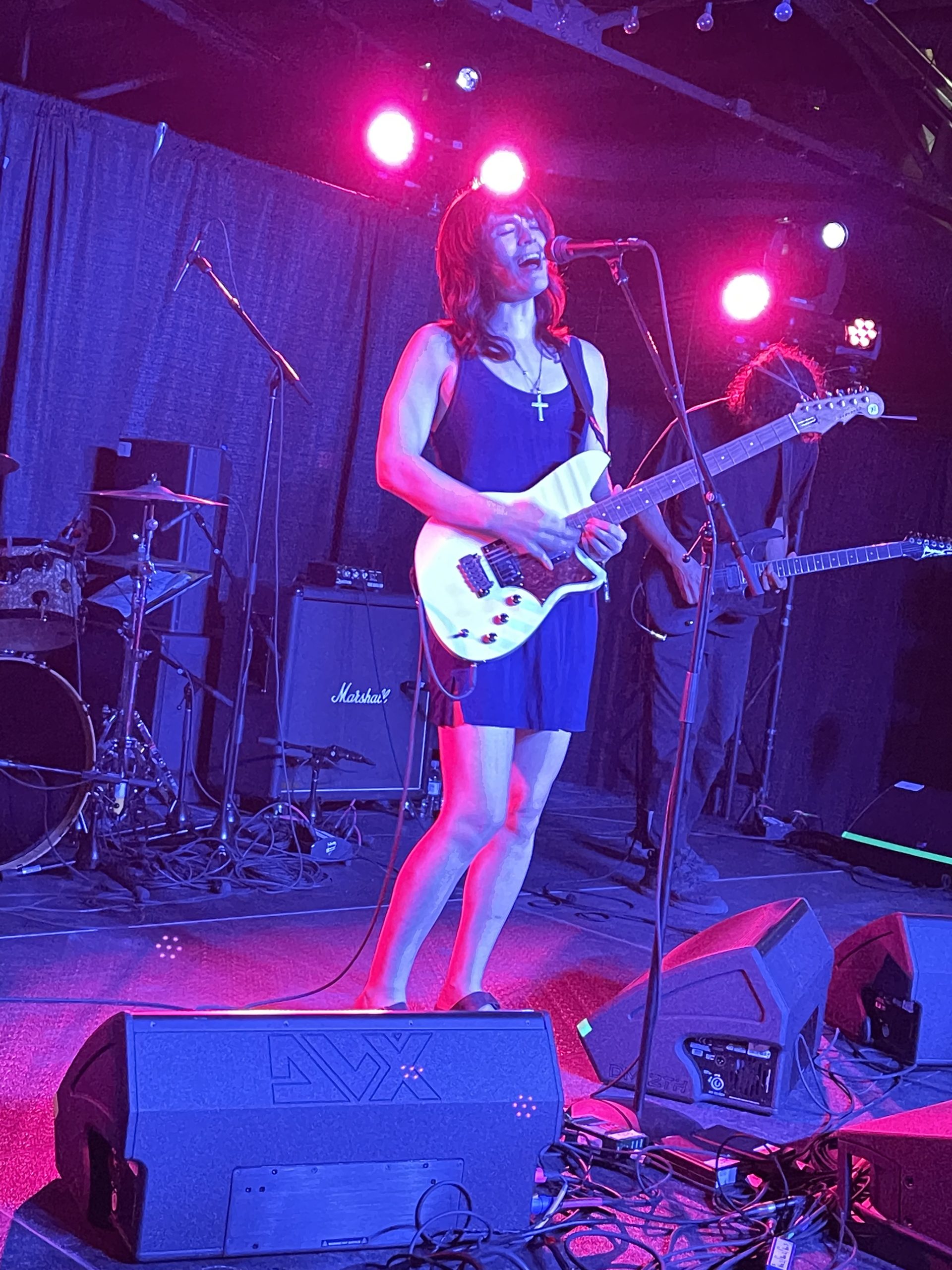
Liturgy ended the night. They performed at The Standard, a small space that encourages close proximities and loud receptions. With the release of 93696 less than two weeks ago, I was curious to see these songs rendered live. and the band didn’t disappoint. Led by Haela Ravenna Hunt-Hendrix, the band barreled through their set, limbs flailing and bodies thrashing in time with the music. Pulling mostly from the new record, with Aesthethica-cut “Generation” being the exception, it was a powerfully cathartic show. She howled and roared at the audience, and we roared right back at her. Although I didn’t witness them firsthand, I’m sure there were smoking craters left onstage afterward. It possessed remarkable amplitude, and the night air cooled our bodies as we all marched together back to our hotel rooms, homes, and various other assorted abodes.
Day 2
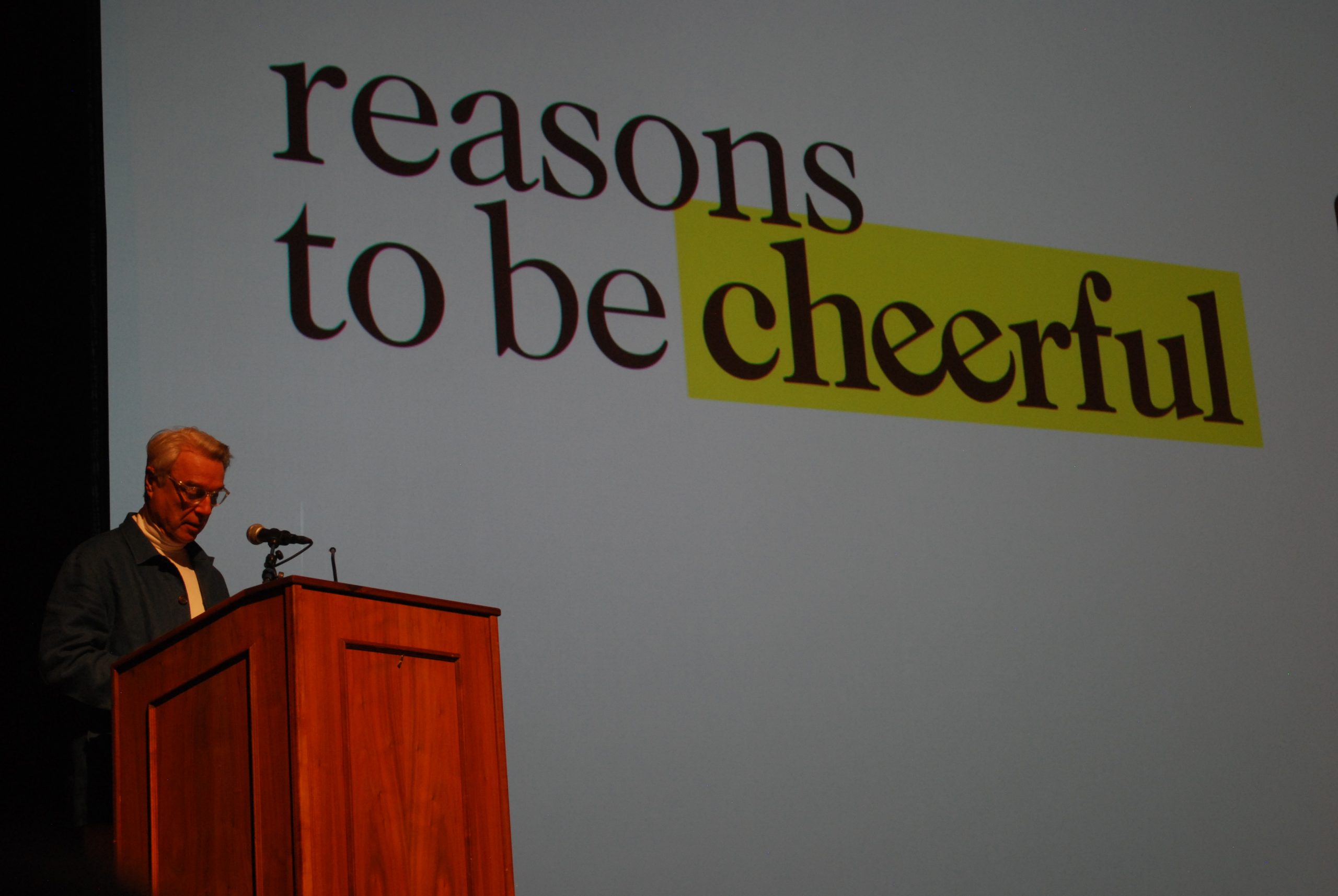
When I first heard that David Byrne would be attending Big Ears, I was beyond ecstatic. I soon saw that it would be a visual presentation and not something musical. David Byrne’s Reasons to Be Cheerful cast a spotlight on two humanitarian efforts spearheaded by individuals in the region. One empowered homeless people to become self-sufficient by selling neighborhood magazines — though the focus was on “Housing First”, a directive that paired men and women with homes so that they could have a sense of stability before attending to their financial and health needs. The second one highlighted the connection between murals and road art and a decrease in traffic fatalities, with an emphasis on community involvement. It was a powerful and emotional start to a day that would find me wading through vibrant pop-centered R&B, Mexicali rhythms, waves of droning sound, and hip-hop brilliance.
Ibeyi had long been relegated to my musical peripheral, respected but never really embraced fully. That changed when sisters Lisa-Kainde and Naomi Diaz took the stage and offered a respite from the worries of the world for an hour. It was cathartic, joyous and exactly what I needed to jumpstart the afternoon. Anchored by live percussion and bass, they had us on our feet and singing along before they left the stage. It became one of those miracle of Big Ears — something you weren’t expecting but afterwards felt as though you couldn’t have lived without it. It was sore hands, sore legs, and full hearts all around. After a quick lunch, I made my way to the Knoxville Civic Auditorium, one of the larger venues the fest employed and a bit of a hike from downtown proper (10 minutes is a hike, right?).

As a fan of Calexico’s latest album, El Mirador, I was making a short list of songs I wanted to hear as I walked. I knew I’d never likely hear tracks from Spoke — I’d kill to hear “Low Expectations” or “Sanchez”, but you still hold on to these little thoughts like gems. But as ever, the band did not disappoint. Opening with “El Mirador”, the band shepherded a few from that record, a couple from Feast of Wire, and spread out the others from across four different records. It was a performance filled with absolute joy and the spark of latin melodies and a genuine love for these sounds. Particular highlights were “Harness the Wind”, “a roaring version of “Black Heart”, and a euphoric cover of Love’s “Along Again, Or”. The music buried down into my body, a balm for troubled times and a cure for heavy hearts.
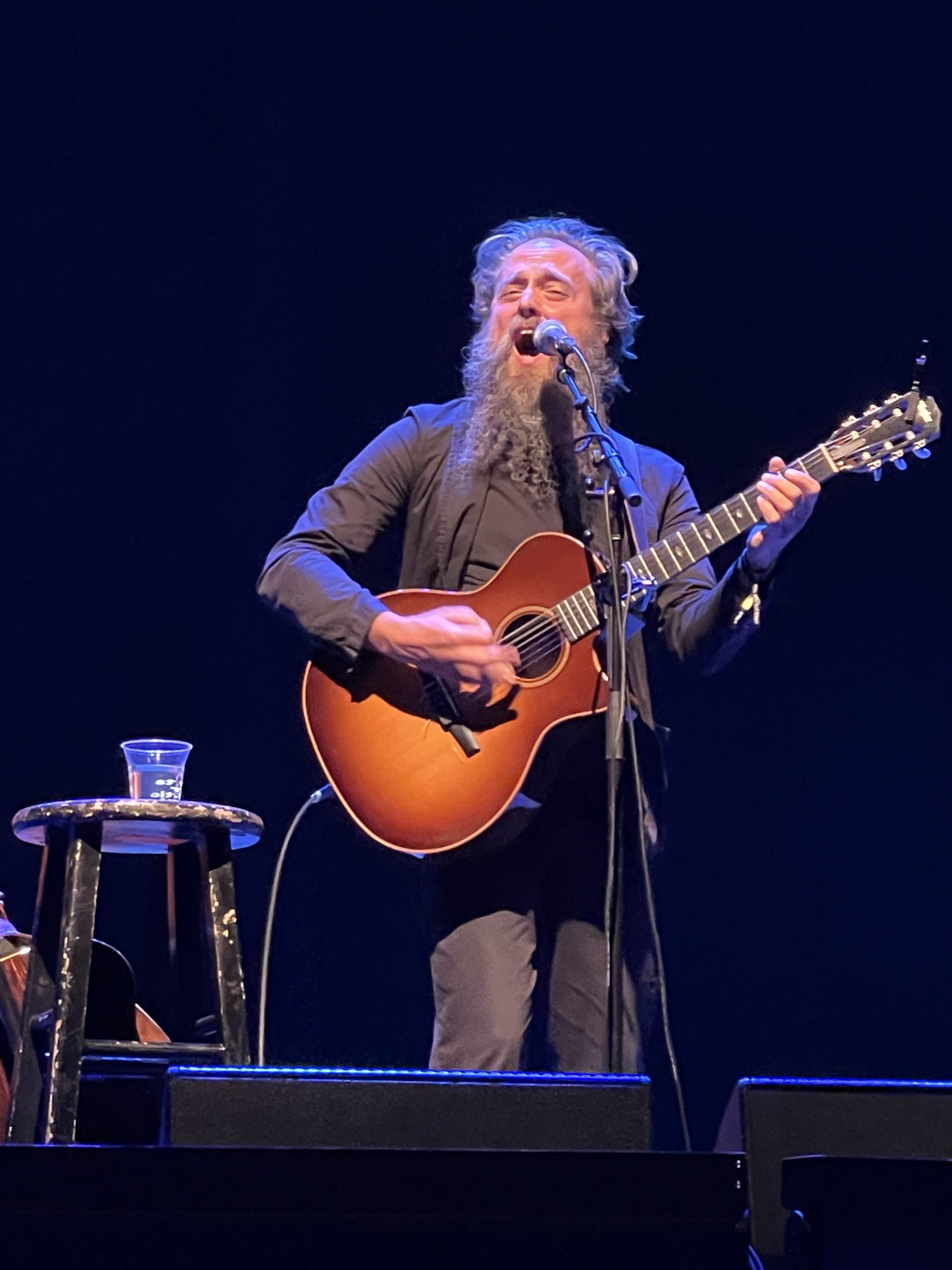
Over the course of the weekend, I had to make choices — based partly on proximity, and partly on how tired I was at any given moment — and the next conundrum came about as I was thinking about attending the Moor Mother concert or Iron & Wine. I had seen Sam Beam perform before but with the fantastic 700 Bliss show the previous night, I decided to head back to the Knoxville Civic Auditorium and hunker down for some folky wonders. It wound up being just him and his guitar, but it seems like he plays a little looser under these circumstances. And that’s exactly what happened. Charming and self-deprecating, especially about stories he’s told multiple times over the years, Beam plucked, twanged, and rambled through sprightly versions of “Naked As We Came”, “Galveston”, and others, striking an intimately conversational tone. It struck me as being particularly forthcoming, as if he was singing directly to me, speaking of past experiences and the ways in which he’s risen above troubles and maintained some measure of hope. It also didn’t hurt that he brought out Joey Burns of Calexico for a couple of songs.
I had plans on seeing Andrew Bird after Iron & Wine, but that would have precluded me from catching the Grouper show — and since I had never seen Liz Harris live before, I felt that I really had no choice but to trek up South Gay Street toward The Point, a small church that functioned as the festival’s northernmost venue. There was a slight delay; whispers were heard about the setup being wrong, but nothing was ever substantively explained. Nevertheless, we were eventually ushered into the sanctum, and Harris was soon seated behind a bay of pedals, keys, and a guitar. It was almost entirely dark, with the only light coming from the impressionistic projections playing out on a background screen. It was serene and mesmerizing, and I felt as though I had fallen away from any concept of time as the sounds slowly surrounded and encased me in their textures. It was remarkable and I only began to come back to my senses when the cold night air rushed to my face as I exited the church. It was around 11:15pm, and I had one more show.

billy woods’ Aetheiopes and Church were two of the most incendiary and creative hip-hop albums of last year, and I was anxious to see how these songs translated live. I was relieved to find that woods was engaging, energetic, and was easily able to command the attention of that crowded room. Backed only by a laptop, which he used himself, woods was fiery and volatile, words bending to his discretions and music toppling and rising between bars. It was a perfect approximation of the albums, and the songs were given even more life through his dramatic delivery and stage presence. It was showy without being presumptive, honest without calling attention to itself. Last year woods positioned himself as one of the preeminent mantle bearers of rap music, and seeing him in his element, deconstructing the genre while rewriting the rules of what hip-hop can be and the emotional stakes buried within its depths. It was well past midnight by the time we all shuffled out of the room, our heads buzzing with dexterous lyrical maneuverings and mutated rap accouterments. The sky was clear as I walked back to the hotel, though I knew storms would be coming overnight.
Day 3
I walked close to 10 miles across Knoxville on Saturday, back forth between venues and the odd bit of food. It was my busiest day and was home to one of the greatest concerts I’ve ever witnessed. The morning progressed leisurely, with breakfast and then some rest and writing in the hotel room. I eventually began the walk to the Knoxville Museum of Art where Stephen O’Malley of Sunn O))) was premiering a new adaptation of the stage play This is How You will Disappear. Originally a mixed media performance that included dancing, visual presentations, music, and other immersive elements, this show would find him adapting the work as audio only, offering it as a multi-channel experience that attempts to reorient your senses and drop you into a harrowing world of spoken word confessions and electronic detritus. The spoken word interludes were written by Dennis Cooper and offered a terrifying glimpse into a stark emotional whirlwind of regret and anguish. It was a dharrowing way to start the day, but I came away feeling scoured, refreshed in an odd way, ready to dig into the heart of the day’s music.
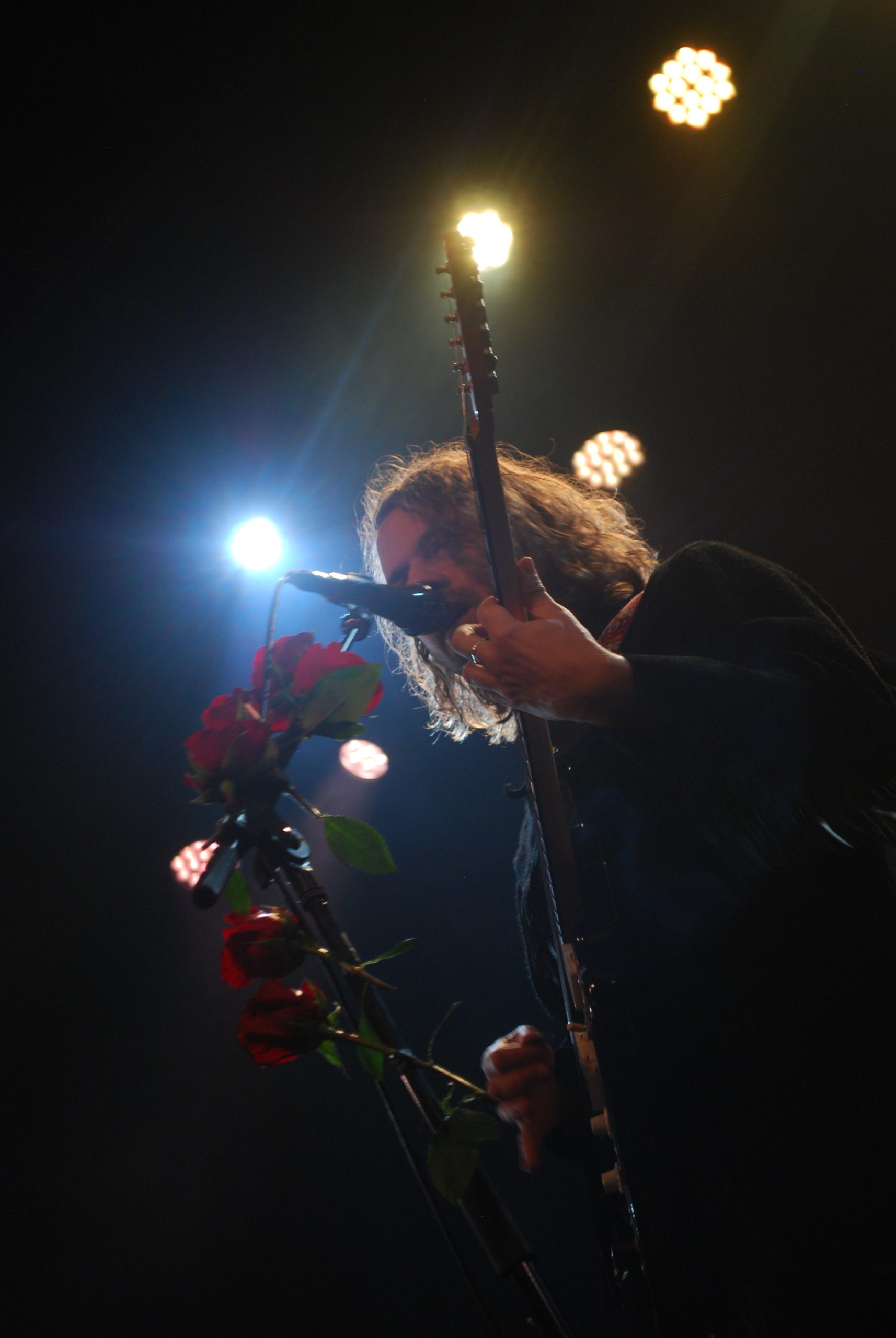
After lunch, I headed over to Mill & Mine to catch some of Kevin Morby’s show before time necessitated an early departure to catch The Weather Station at The Point. Morby’s performance could have been used to show the untapped power that indie rock still holds in a live setting. I was hoping that he would play “A Random Act of Kindness” from his latest album, This is a Photograph — and he did, with all its riotous Dylanesque charm and rock ferocity. It was hard tearing myself away, but I had heard that The Weather Station performance would stray from the louder band-oriented sounds of her most recent tour. I got to The Point and sawe that singer Tamara Lindeman would be sitting behind a gorgeous grand piano. Eventually she came out alongside multi-instrumentalist Karen Ng, violinist Macie Stewart, her bassist and drummer — and they began to run through a collection of songs that favored balladry over overt theatricality. There were moments of rising volumes, but the overall feel was that of introspection and quiet determination. It was beautiful and casually effortless, and reminded me that I need to spend more time with 2021’s Ignorance and last year’s How Is It That I Should Look at the Stars.
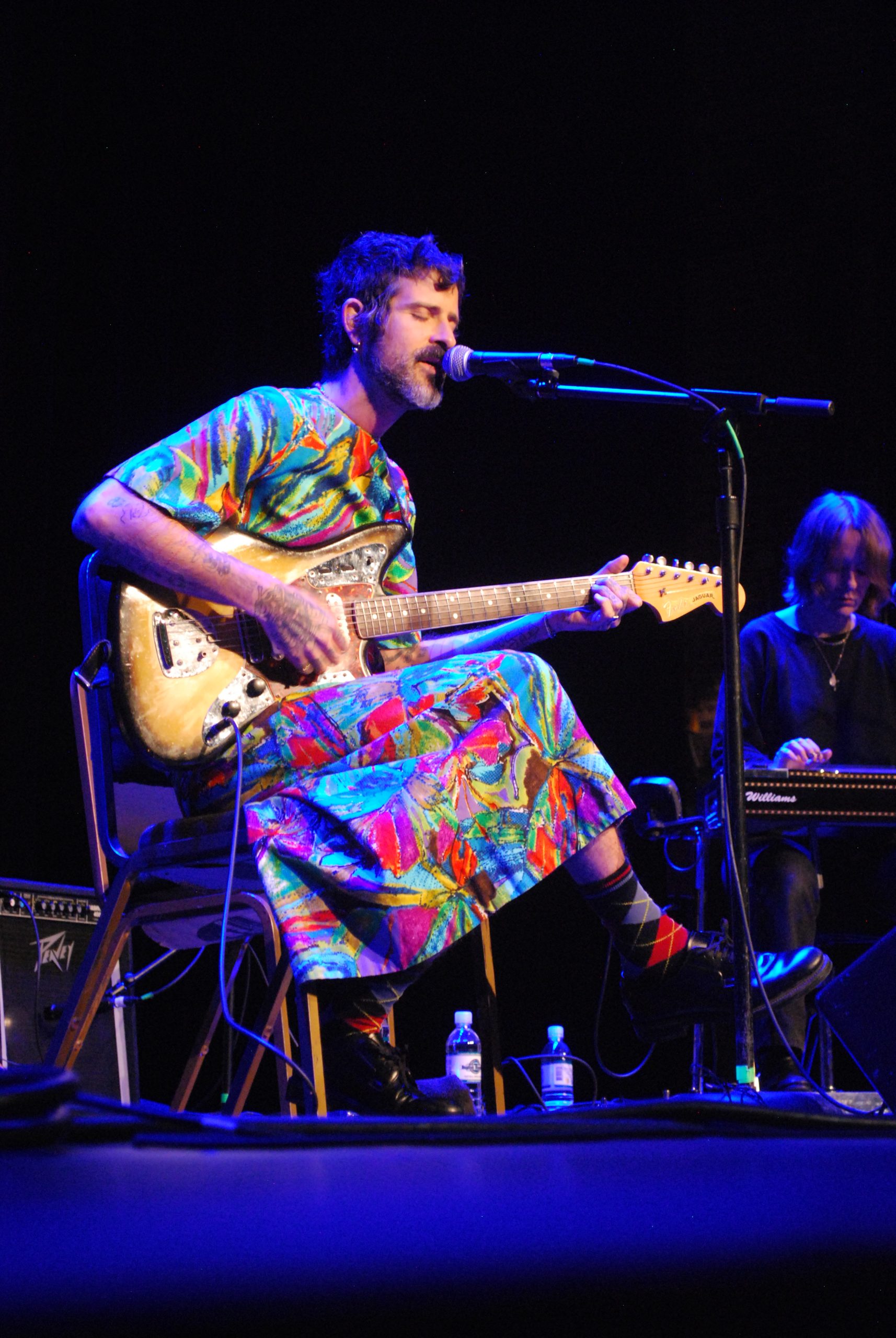
My next stop was the Bijou Theatre, a few blocks south of my hotel, to see Devendra Banhart. He came out wearing a dress, a reaction to the hateful legislation working its way through Tennessee’s political sphere that seeks to ban drag shows. Drawing mostly from 2019’s Ma, the set was breezy, loose, and emotionally raw — especially on “Memorial”, where Banhart started crying as he worked his way through the ending. He brought out Roberto Carlos Lange (aka Helado Negro) for “Abre las Manos” and Dorothy Berry for “Bad Girtl”, each adding their distinctive voices to his plaintive arrangements. After his first song, his capo broke, and he jokingly asked if anyone had one. A hand shot up from the audience, and Banhart called him up. A capo was produced and his next song, “Mi Negrita” featured this borrowed piece of equipment. A highlight was “Carol’s in Love”, a spry look at affection and the need to accept love in all its forms.
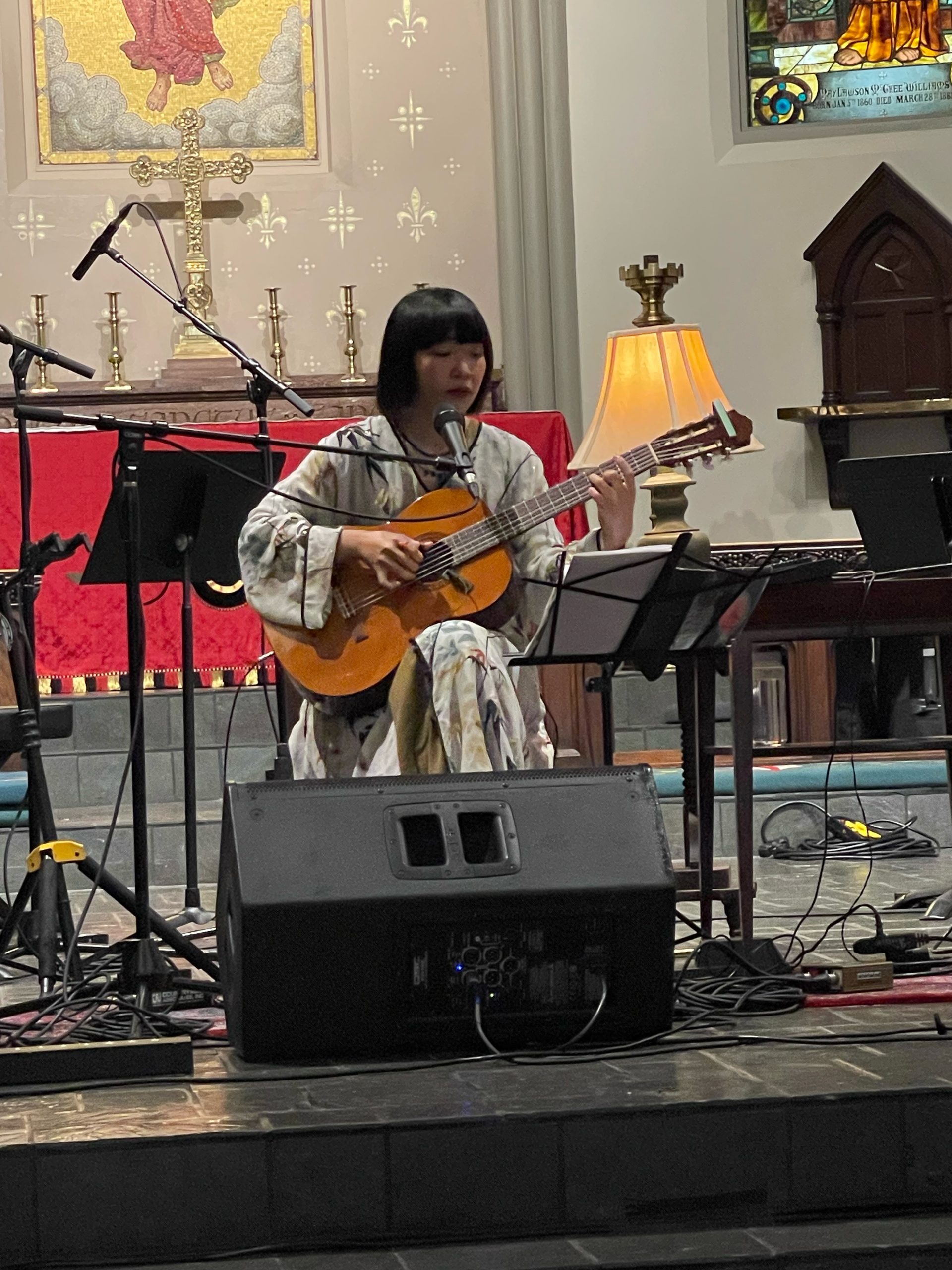
Next was Ichiko Aoba, performing at St. John’s Episcopal Cathedral, one of the shows I was most excited to see. After luxuriating in her last album, Windswept Adan, on the drive to Knoxville, I was ready to hear the songs expressed here. To say that she obliterated my expectations was an understatement. This was likely the most beautiful concert I have ever experienced., The sound seemed drawn down from some celestial plane. Her voice was crystalline, frozen in time, a privilege to hear. And when she performed the theme from Ponyo, I was in tears. For the second half of the show, she brought out a few members of the Knoxville Symphony Orchestra, adding another layer to the already mesmerizing musical talent on display. As the music swirled around us, no one made a sound. The church was silent but for the heavenly sounds pouring from the stage — it was almost unbelievable. She was humble, graciously accepting our adoration. She even ushered the guest performers offstage before herself. I wasn’t sure anything else would even come close to approaching the grandeur of her set.
One of the best things about the Big Ears app is that they post the time and location of the secret shows littered throughout the weekend, although there are always a few extra secret shows that pop up from time to time. An hour before the show, they post the performers, and so I was curious about the one folling Ichiko Aoba. I left myself time to grab a quick bite to eat and then waited to see the details of the upcoming show. Around 8:45, it came through. It would be Arooj Aftab, Shahzad Ismaily, and Maeve Gilchrist performing at The Point, and I probably finished my food in 10 minutes. I hurried back up South Gay Street to the venue, finding myself surrounded by a host of people with the same idea. Once there, the venue soon reached capacity. They took the stage and ran through half a dozen songs, finding moments to highlight their individual prowesses. Aftab’s voice was radiant as always, Ismaily was a wizard on Moog and bass, and Gilchrist was flying across the strings of her harp, occasionally strumming it so hard that she created a whirling cacophony of notes. It was a brilliant collaboration, one that allowed each to shine while highlighting their collective talents. Even the bitter wind of the evening as I walked out of the church couldn’t shake my joy.

I knew I wanted to catch Charlotte Adigery and Bolis Pupul, but I swung by The Standard for a bit to catch a few songs from Xylouris White, the duo of Greek singer and laouto player George Xylouris and drummer Jim White (of Dirty Three fame). Their update of traditional Greek sounds was infectious and hypnotic, and even in the brief time I was there, I found their music completely immersive and demanded more attention when time allowed. Eventually I left and walked over to Mill & Mine, finding a smaller crowd than I was expecting for the Charlotte Adigery and Bolis Pupul show. They were letting people in during the duo’s sound check, and it was actually wonderful hearing them work through technical hiccups and seeing the way they interacted with one another before the show started properly. Eventually, the room started to fill up, though I don’t believe that it ever reached capacity. The evening turned into one giant dance party, with the band working their way through 2022’s Topical Dancer with all the fervor I would have expected. Everyone was sweaty and bodies were mashing together in a blur of limbs and simultaneous movements. They paused once to eat bananas,a brief respite in their energetic set. And then they were at it again, pouring their hearts into this roar of musical goodwill. It was joy and love and everything we could have possibly needed.
Day 4
I began the last day with a trip through the musical subconscious of electronic legend Morton Subotnick. Performing his recent work, As I Live and Breathe, he took us through moments of subtle droning rhythms, the odd melody emerging from these minimal atmospheres — and it was accompanied by bespoke images that added to the weight of the music’s perspectives. It was amazing to see him so fully invested in his work after so many years. His dedication to experimental sounds was inspiring and allowed those of us in attendance to revel in his vast creativities. After some lunch, I headed over to Jackson Terminal for a set with Luke Schneider, a man whose work with pedal steel borders on mythical, creating abstract shapes and soundscapes that overwhelm your senses and submerge you in his considerable talents. It was a vast swirling collection of elongated notes and angles, and I simply closed my eyes and surrendered to their movements.
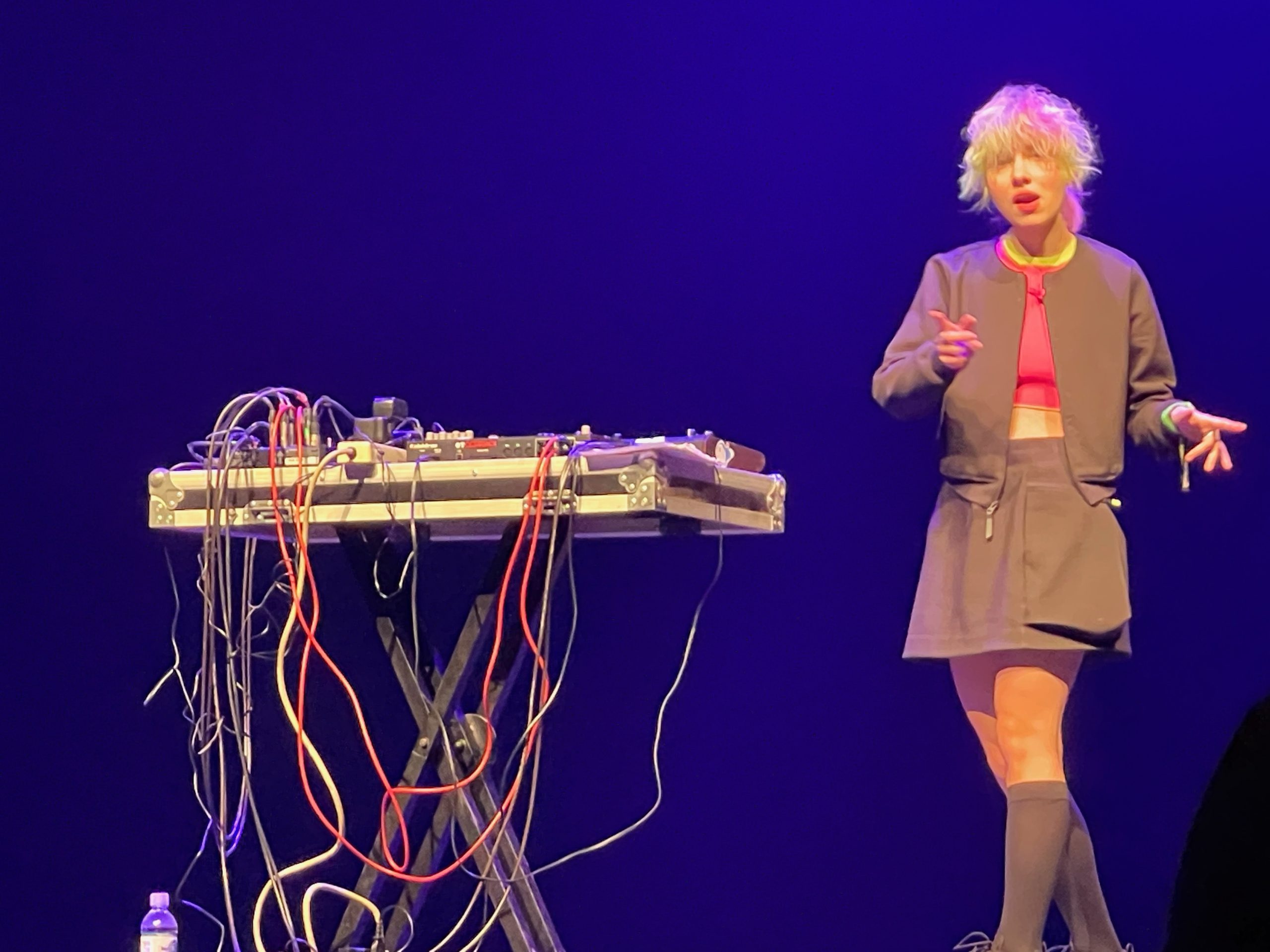
But I felt an odd pull to see Kate NV, and so I left the Schneider performance early and walked over to the Knoxville Civic Auditorium for a set of hyperkinetic pop music and experimental flourishes. She was absolutely charming, a dancing ball of energy that fed the inner parts of your heart. Her music veered between ferocious pop music and more circuital abstractions. I am fairly certain that the smile never left my face during the entire set. Another unexpected joy in the Big Ears experience.

With Oneohtrix Point Never coming up at the same venue, I simply sat in my seat and waited for the people to start drifting in. I was surprised that they didn’t clear the room but I didn’t mind as I had a good view of the stage. 0PN was a huge draw for me this year, and I was filled with nervous energy. The room slowly became full, though not packed, and Daniel Loptain took the stage at 6:00. After a brief mention of Ryuichi Sakamoto’s recent passing and the influence Sakamoto has had on his own work, a moment of silence was held out of respect. And then the music started. And it was everything I had hopped for – a visually dazzling spectacle of sound and emotional release. Tears were shed, and darkness was expelled. He stayed behind his rig and offered us shelter from the world for an hour, and we were eager to immerse ourselves in his generous gifts. It was over too quickly but left an imprint that will stay with me for a long time.
I was fairly exhausted by this time, the weekend’s activity finally taking its toll. And I decided to skip the Algiers show that I had scheduled and get some dinner and rest. But the fireworks were coming. I knew that the last show of the festival, John Zorn’s Cobra, would be packed, and I wasn’t wrong. Lines stretched around blocks from the Tennessee Theatre, evidence of his popularity to those attending. I had read a bit about Cobra and knew that it was going to be an unusual experience, and I wasn’t disappointed. Featuring 13 musicians, including guitarist Mary Halvorson, Slayer drummer Dave Lombardo, John Medeski, and a host of others, the performance was guided by Zorn from a separate table, with various colored cue cards scattered across its surface. I won’t go into the mechanics of the performance (you can read about it here), but it was unlike anything I’d ever witnessed. There were four drummers, multiple guitarists and bassists and other instruments that were shaken to pieces.
As I sat there and took it all in, I felt as though I was being given something special, a crescendo of sound that marked the ending of this whole adventure. Zorn was personally seeing me off, showing me that it was okay to leave and carry these memories with me. It lasted roughly 45 minutes and then it was over. Cobra ws done, Big Ears was done, and I felt sated. I was happy and felt privileged to have seen so much in just a few days. Over their 10 years of shows, Big Ears has become one of the best festivals in the US, rivaling anything larger cities might offer. And now all I can think about is what they have in store for us next year. Thanks for the memories, and I’ll see you next year.

